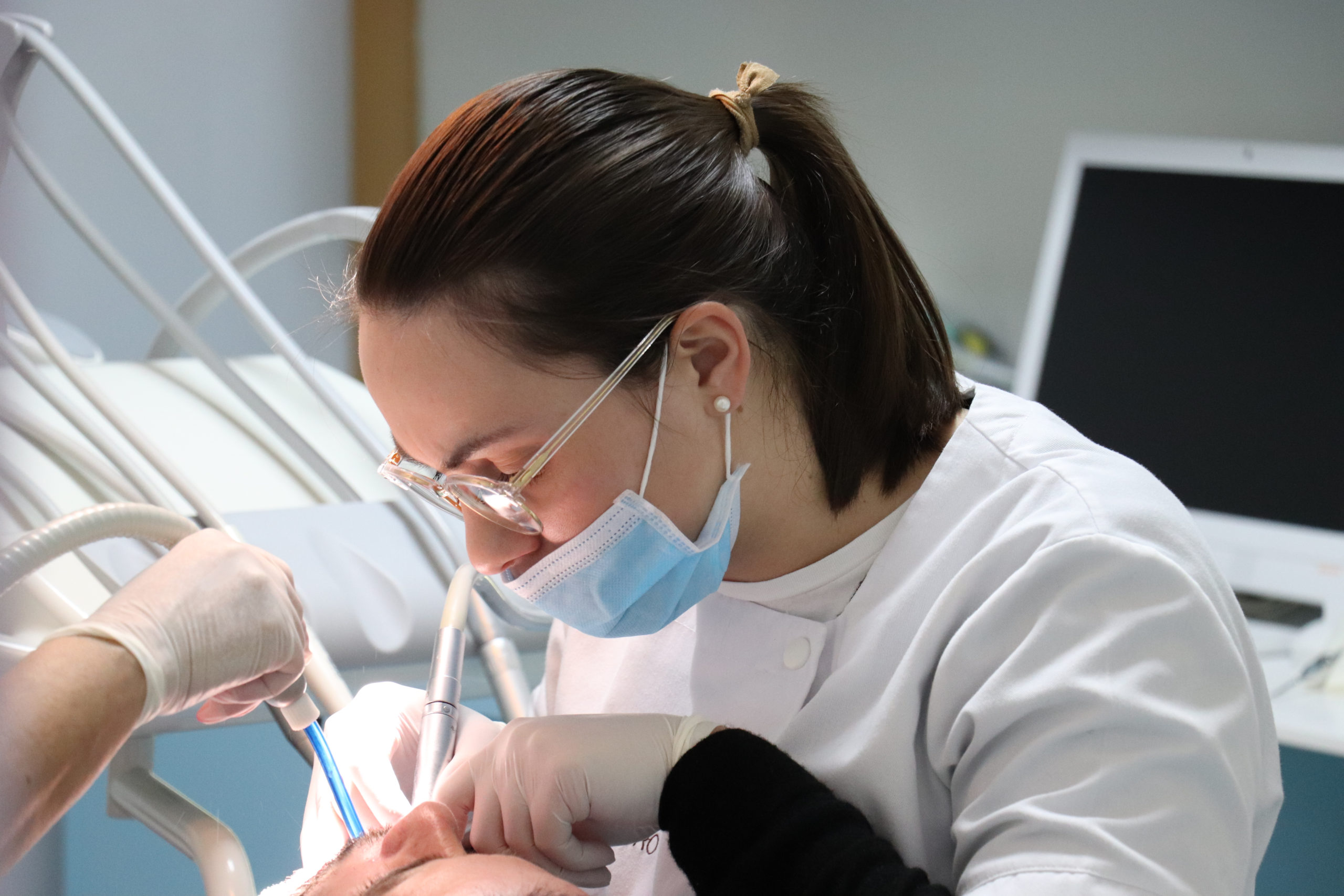What does implant integration mean?
 Implant integration is an important requirement that determines the durability of the treatment, its aesthetic quality and its long-term success. It is the stable union between the jaw bone and the titanium surface.
Implant integration is an important requirement that determines the durability of the treatment, its aesthetic quality and its long-term success. It is the stable union between the jaw bone and the titanium surface.
The new tooth is attached to the implant once it is strongly anchored to the bone. It is not possible to perform an implant treatment without integration.
The integration of the implant in the bone allows replicating the function of the roots of missing teeth, anchoring new individual teeth or complete rehabilitations. This is why the time required for osseointegration is extremely important and must be respected.
The time required for implant osseointegration
The integration process takes, on average two or three to five months. In more complicated cases involving bone grafting or sinus lift, the healing time frame is longer and varies according to each specific case.
If you have any doubts regarding dental implant osseointegration, please ask your dentist about your particular case.
In some cases, after the surgery, the dentist informs the patient about the needed healing time frame, always taking into account the quality of the jaw bone.
The osseointegration process
The osseointegration process involves the formation of new bone around the small titanium cylinder. When an implant is placed, there is a number of events related to bone remodelling. The main factor is healing and this is the most important thing for osseointegration to happen.
In order for a proper bone healing and implant integration to occur, the body needs to produce bone cells called osteoblasts.
Factors that influence integration
- The implant must be biocompatible;
- The implant’s design;
- The characteristics of the implant’s surface;
- The amount of bone available, in both height and width, and the quality of the bone;
- The dentist’s skills;
- The surgical technique used;
- The load and its conditions, i.e. the new tooth on the implant;
- The patient’s lifestyle habits, such as smoking;
- The absence of systemic diseases such as osteoporosis, although it is possible to successfully place implants in people with this disease;
The benefits of osseointegration
A proper osseointegration allows increasing the durability of the treatment. Therefore, with a small titanium screw firmly attached to the jaw bone, the dentist can rehabilitate patients who have lost their teeth. Individual crowns, bridges and hybrid prostheses, or the so-called fixed dentures, are screwed onto this small cylinder.
The history of osseointegration in dentistry
The osseointegration process was discovered by Branemark in the University of Gothenburg in the mid-1960s. This Swedish researcher is considered the father of implantology because he devoted much of his life to the study and development of osseointegration.
His studies opened up new horizons for the development of techniques related to implants and better solutions for dental problems.
The Branemark System is synonymous with a concept of osseointegration which introduced safe and long-lasting dental implant treatments. This system offers a wide variety of solutions and treatment options. It is the most widely used system in the world.
Scientific sources and studies
- Tonetti MS: Determination of the sucess and failure of rootform osseointegrated dental implants. Adv Dent Res 13: 173-180, 1999.
- Skalak R: Biomechanical considerations in osseointegrated prostheses. J Prosthet Dent 49:843-849,1983.
- Brunski JB, and Skalak R: Biomechanical Considerations in Advanced Osseointegration Surgery: Applications in Advanced Osseointegration Surgery: Applications in the Maxillofacial Region. Worthington P, Branemark PI: Carol Stream,II, Quintessence, 1992,pp 15-40.
- Davies JE:Mechanisms of endosseous integration. Int J Prosthodont 11: 391-401, 1998.

